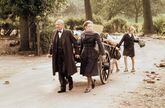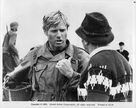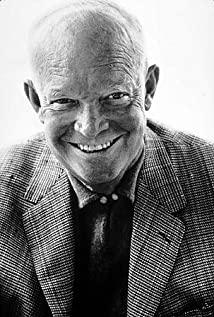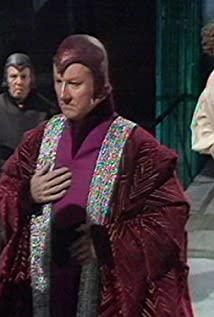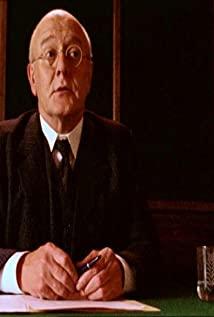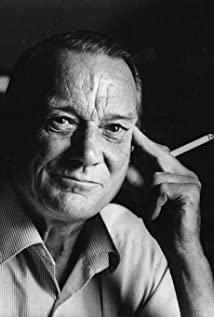The director is Richard Attenborough, who has filmed a series of excellent works such as Gandhi and Chaplin, and the filming of "The Far Bridge" was in 1977, which was the peak of his creation. . Moreover, as his third personal film, in "Distant Bridge", he was able to include the 9 big stars at the time, making the most expensive major production of the entire 1970s. Speaking of actors, the old gourd movie emperor Lawrence Oliver plays an old Dutch doctor who plays an unimportant role in the film. James Tyin played a sergeant of the 101st Airborne Division, Robert Redford played the captain of the 82nd Airborne Division, and several other stars also played important roles: Sean Connery played the first British airborne. Teacher, finally returned in a big defeat. Michael Kane played the 30th Corps Armored Regiment lieutenant colonel, and Gene Hackman played the Polish brigade commander. He initially opposed the "Market Garden" plan. The second batch of parachutists were massacred by the Germans! Anthony Hopkins played as the commander of the 1st Airborne Division as the lieutenant colonel who won the bridge. He stood by and failed and was finally captured gloriously! All of the above are all famous actors. At the time, each of them was a heavyweight. Even now, as supporting actors, they still contribute shining roles.
Speaking of the story, the "Distant Bridge" shows the Operation Market Garden initiated by the Allied forces between September 17 and September 25, 1944. It was also a disastrous operation. The army suffered heavy losses. In this combat operation, the German army suffered only 3,300 casualties, while the Allied forces lost more than 17,000. Among them, the 82nd Airborne Division suffered 3400 casualties and the 101st Airborne Division suffered 3800 casualties. The British 1st Airborne Division and the Polish Paratrooper Brigade, which were in the forefront of the assault and were responsible for capturing the Arnhem Bridge, suffered even more heavy losses without any assistance. There were nearly 700 casualties among the 1,000 airborne personnel of the Polish Paratrooper Brigade. The 1st Airborne Division had nearly 7,000 casualties and captured personnel. Fewer than 2,000 successfully broke through the encirclement of German tanks. After this battle, the 101st and 82nd Divisions of the US Army and the 1st Airborne Division of the British Army never conducted airborne operations in World War II.
As the background of the war, the Normandy Landing in June 1944, under the command of General Eisenhower, achieved an unprecedented victory. It also dealt a major blow to the Germans. Soon after July 25, the Allied 3rd Army led by Patton rushed out of Normandy and began a large-scale pursuit of the Germans on the French Plains. The Allies gradually began to be optimistic. Emotions. Allied soldiers believed that the war on the European battlefield could be ended in 1944, so that they could return home before Christmas. In this situation, Marshal Montgomery from the British Army, in order to make his military merits not inferior to that of General Patton, changed his usual cautiousness and proposed a bold strategy. The Ruhr region in the heart of Germany. In order to cooperate with this strategy, Marshal Montgomery proposed a military operation called the "Market Garden Plan" without thoroughly clarifying the situation of the German army's defense. The content of the action plan is to use 3 Airborne Divisions (US 101st Airborne Division, 82nd Airborne Division, British 1st Airborne Division) and 1 Airborne Brigade (Polish Paratrooper Brigade) from Eindhoven to Arnhem 63 in the Netherlands. Airborne in a narrow area of kilometres to seize all the bridges south of the Lower Rhine Bridge in Arnhem and open a narrow corridor (code-named "market") in the northern German plains. At the same time, the 30th Army of the British General Horrocks launched a ground offensive, through the bridge captured by the paratroopers, leaped to the north bank of the Rhine, and seized the bridgehead (code-named "Garden") that entered Germany. In this way, the Allied forces can not only divide the Netherlands in two and eliminate the latest German weapon V-2 missile base that bombarded London from the west of the Netherlands, but also can cross the Rhine, bypass the Siegfried line of defense that Germany has painstakingly managed, and open the way to enter Germany. The gate, and can go south to Ruhr, Germany's main economic base, or sweep east to the northern plains of Germany, and then capture NC's nest, Berlin.
After the Battle of Normandy, the Allied airborne forces were reorganized into the Allied 1st Airborne Regiment, under the jurisdiction of three US airborne divisions, two British airborne divisions, and an independent paratrooper brigade of the Polish Army. Hope that all participating in Europe The airborne troops on the battlefield can fight under unified command. The troops participating in the "Market Operation" are three of the five divisions of the Allied 1st Airborne Regiment. They are Major General Taylor’s U.S. 101st Airborne Division. They are scheduled to land in the north of the British 30th Army and take charge of the occupation of Sonang. ) The bridge to the northwest of Eindhoven and the Veghel bridge, and the distance between the 101st Airborne Division and the 30th Army is also the closest of the three airborne divisions. The next farthest was the US 82nd Airborne Division by Brigadier General Gavin. They landed to the northeast of the British 30th Corps and attacked Grave and the Nijmegen Bridge. Major General Urquhart’s British 1st Airborne Division and the Polish Independent Paratrooper Brigade landed at the farthest north from the 30th Army, and it was also the terminal of the 30th Army-An Heng. The British 1st Airborne Division had to occupy the road bridge in An Heng and the railway bridge in Oosterbeek.
On September 17, 1944, the U.S. and British Air Forces used almost all of their possessions, including more than 5,500 transport aircraft, 2,596 gliders, more than 8,000 combat and bombers, and successfully airborne more than 35,000 people and 568 in the three places. Artillery, 1927 military vehicles, and 5,230 tons of materials launched the largest airborne operation in the history of human warfare.
But on the German side, due to intelligence errors, Montgomery had no idea that in the area where the Allied forces were scheduled to land, the Germans had deployed two armored divisions of the 2nd SS Panzer Corps and some troops of the Airborne First Army. The Allied paratroopers, lacking heavy equipment, landed on the heads of the German armored units. The U.S. parachutes performed an average parachute height of 366 to 457 meters, which was much higher than the standard parachute height of 244 meters in World War II. There are parachuting areas. The German anti-aircraft guns kept firing, and many people were killed by the Germans before they reached the ground. What's especially bad is that less than two hours after the Allied forces launched an aerial assault, Stuart, commander of the German 1st Paratrooper Corps, obtained an Allied combat order from a glider shot down. He immediately took this order to the headquarters of Group B Army to see Commander-in-Chief Mordel, planning a German counterattack. Model chose An Heng as the training area for the first part of the SS armored unit, and they tried their best to prevent the allied airborne troops and tank units from meeting.
The combat process is as follows: after the aforementioned airborne on September 17. On the 18th, 1,360 transport planes and 1,203 gliders airlifted the follow-up echelon of each division. The U.S. 101st Airborne Division landed in the Feher area. It captured the nearby South Williams Canal Bridge and captured Zongzhen on the same day. On the 18th, it reunited with ground vanguard forces and captured Eindhoven before the end of the day. The 82nd Airborne Division of the United States landed in the Graff area and captured the Maas and Maas-Wal canal bridges on the same day. On the 19th, it rendezvous with ground vanguard forces and captured the Waal bridge near Nijmegen by the end of the 20th. The British 1st Airborne Division airborne in the Arnhem area, but was violently counterattacked by German armored troops and infantry. It failed to capture the Rhine Bridge and was forced to turn into defense. The subsequent echelon of the division and the 1st Brigade of Polish Paratroopers that landed on the south bank of the Lower Rhine on the 21st were massively killed and wounded by the Germans. On the night of the 25th, the division retreated to the south bank of the Rhine; at dawn the next day, more than 6000 people who had not crossed the river were captured.
Due to insufficient prior intelligence, improper command in the war, and the slow progress of ground forces, and the beginning of the campaign, the Canadian First Army’s offensive to the northwest of Antwerp progressed slowly, and the Canadian troops did not enter Shaier until the end of September. Dehekou, and at that time the entire operation had already failed. Coupled with the slow progress of the British 30th Army and the continuous blows by the Germans along the way, the "Market Garden Operation" plan failed. A major blow to the excitement and pride brought about by the Normandy landing made the Allies realize that the Germans were not as vulnerable as the Allies thought they were. Of course, the outcome of the war was also related to some accidental factors. For example, in the fiercely contested area of An Heng, the Allied forces received the 9th "Hohensdorf" armored division of the Waffen SS, the elite Waffen SS from the German "West Front Fire Brigade". The 9th SSPanzer Division'Hohenstaufen' and the 10th SS-Panzer Division "Frundsberg" of the 10th SS-Panzer Division "Frundsberg" were stubbornly blocked. . Coincidentally, after the Battle of Normandy, the 9th "Hohensdorfen" Panzer Division, which was participating in the German army, was not rehabilitated due to the hardships in the war. After July-September, it finally took time and was withdrawn by the German command. Rest and reorganization in Anheng area. At the same time, its existing weapons (mainly equipment such as howitzers and trucks equipped by the two battalions) were transferred to the 10th "Frenzberg" Armored Division of the Waffen SS who remained in Anheng. And just as the "Hohensdorfen" armored division planned to transfer to the German mainland for further rest and replenishment, the Allied paratroopers dropped from the sky. So the rest of the "Hohensdorfen" armored division joined the war on the spot, and the "Frenzberg" armored division launched a joint attack on the Allies, which became one of the keys to the victory of the German army. From the beginning to the end, the formation of the German army has been in a state of incompleteness, but the fighting capacity is still fierce.
As a war film, "The Far Bridge" can be described as grand and magnificent, with a broad vision of war. Whether it is the overall layout or the details of the battle on the battlefield, it is all inclusive, which also makes the film appear to be indifferent. , But overall, the flaws are not concealed.
The "Market Garden" operation was proposed by the British General Montgomery. The unified command of the entire operation was also under the responsibility of the British. The 30th Army of the British Army was also the main force of the "Garden" section. The 82nd Airborne Division of the British Airborne Division also suffered heavy casualties. . In the end, the director of this film is also a British person. It is very rare to show the British people's failure and pain on the battlefield, and also to emphasize the spirit. What's more, even today, the movies we have seen about World War II are basically depicting how the Allied forces won. The two men's battles about the defeat of the Allied forces are still very few.
View more about A Bridge Too Far reviews



